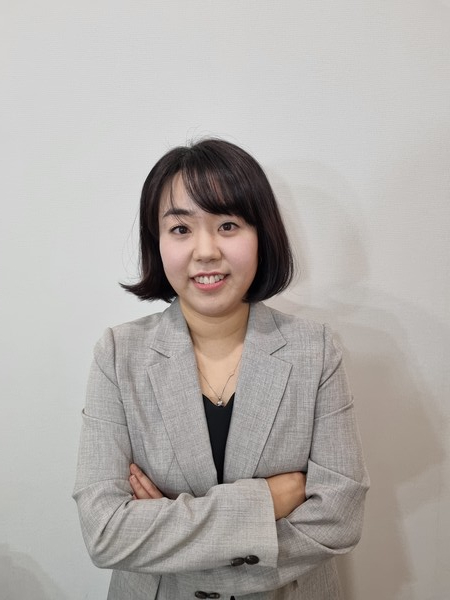어린이과학동아 편집장님이 연세대 영자신문과 인터뷰를 진행했어요.
어과동 편집실이 어떤 마음으로 어과동이 제작하는지,
여러분에게 과학을 재미있게 전달하기 위해 어떤 것을 고민하고 있는지
인터뷰에서 함께 확인해 볼까요?
(여러분의 영어 실력을 의심치 않으나,
읽기 어려운 친구들을 위해 구글 번역기를 링크해 놓을 테니
필요한 친구들은 사용해 보세요!)


LEARNING SCIENCE is an enlightening experience, especially for curious young minds. In the center of efforts to make sense of the exotic and complex world of science lies a group of reporters and editors working arduously to publish science magazines for children. In celebration of Korea’s Children’s Day on May 5, The Yonsei Annals interviewed Kim Jeong, the editor-in-chief of Kids Science DongA to gain insights into the field of science journalism.
Annals: Could you briefly introduce Kids Science DongA?
Kim: Kids Science DongA is a biweekly magazine with over 70,000 subscribers consisting mostly of elementary students in grades 3 and 6. Half of the magazine consists of cartoons and serves to introduce interesting scientific concepts encompassing chemistry, biology, physics, earth science, and computer programming. Some articles also cover interviews and current issues.
Our magazine is interactive and encourages active participation from the readers. We have a community of young writers who post articles on our online community called Popcorn Planet; our professional reporters edit these articles which are sometimes published in the magazine. We also give out online press cards to these young journalists and grant free or discounted entry to 86 different museums and science centers. Additionally, Kids Science DongA has distinctive articles dedicated to contributions from its readers including a debate section on controversial topics—such as the use of ChatGPT in assignments or the forced extinction of disease-carrying mosquitos—with responses taken directly from our online community. We also publish snippets of our projects, including the “Plastic Diet Project” where readers share different ways they are reducing plastic in their daily lives, as well as the “Earth-Loving Explorers" where participants post photos, sounds, videos, or locations of organisms on our mobile application—contributing to the biological species data managed and used by scientists for research and restoration of organisms’ habitats.
Annals: What does Kids Science DongA’s production process look like?
Kim: First, we go through an editorial meeting to brainstorm topic ideas. Then we have meetings with designers about the magazine layout, illustrations, and overall design. Because our magazine is for children, we take the visual aspect of the magazine very seriously; after the photos and illustrations are complete, we set photos and text on paper and confirm their arrangements. After reporters complete their drafts, we go through the editing process. As for the cartoons, cartoon artists send a storyboard for the reporters to fact-check the scientific content and discuss further adjustments if necessary.
Annals: What was your main motivation to work in the field of science journalism?
Kim: I majored in chemistry and double majored in mass communication. I have always loved science, but I didn’t think that becoming a researcher was my calling. I decided that I wanted to become a person who could spread the joy of science by creating content. I chose magazines as a medium rather than straight news[1] which tends to be short pieces of writing that are produced and consumed rapidly. Looking back, I aspired to be a journalist when I was little and I had a passion for reading and writing, which I believe ultimately led me to this field.
Annals: What does your typical day at work look like?
Kim: In the morning, I usually go through a list of science media outlets such as Science, Nature and Royal Society, check current issues that our team can possibly write about, and send the sources to reporters. Because the deadlines for our drafts are before noon, I set a personal goal of finishing editing one article by midday. Other than that, my workday is a series of meetings. I have meetings with reporters and designers or with possible donors and guest writers where I introduce and promote our magazine. My team tries to reach out to people who can contribute to our magazine; recently, we worked with a nature photographer specializing in photographing mushrooms. Because reporters tend to be busy working on their own articles, I try to provide sources of inspiration, suggest new ideas, and contact different people.
출처 : The Yonsei Annals(http://annals.yonsei.ac.kr)
-이하 기사 원문은 아래 링크를 통해서 확인하세요!

-구글 번역기로 이동





축하드립니다!!
편집장님 축하드려요!!
우와!! 김정 편집장님 축하드려욤!!
김정 편집장님 축하드려요 :D
어린이 여러분들 덕분에 다른 매체에 어과동을 어떻게 만드는지, 그리고 팝콘플래닛에는 어떤 활동들이 있는지, 어린이들이 얼마나 멋진 활동들을 하고 있는지 충분히 전할 수 있었습니다. 앞으로도 재밌는 어과동 어수동 팝콘플래닛 만들어 나갈게요!;)
우왕!